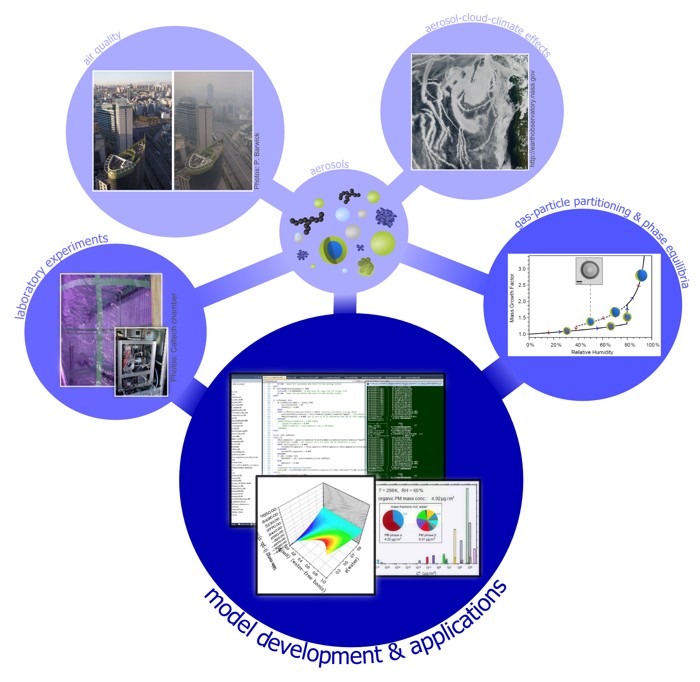
|
ResearchMotivation & Research DirectionsCurrent research activities of our group are focused on the development of numerical models and system analysis tools to enable better predictions of the partitioning of water and semivolatile organic species between particles and the surrounding air. Aspects of such models include the prediction of the types and amounts of condensable products that form due to chemical reactions in the gas-phase (atmospheric chemistry), as well as mixing effects in (and on) liquid, semi-solid and solid particle phases (applications of thermodynamic equilibrium computations and kinetic models). 
Fig. R1. Improving our understanding of aerosol formation and transformations via the development of numerical models of different complexity, a variety of laboratory experiments, local, regional, and global observations.[Source: figure by A. Zuend]
Aside from our interest in the fundamental physical and chemical aerosol processes and their prediction with box models, a key motivation is to translate process-level knowledge of gas-aerosol chemistry and thermodynamics into information and constraints useful for the design of computationally efficient descriptions of physicochemical processes in atmospheric large-scale (3-D) models. Atmospheric 3-D models are essential tools for the forecasting of air quality and evaluation of climate change scenarios, important for long-term political decision-making and regulations concerning environmental protection. Improvements of aerosol modules used in large-scale atmospheric models are also necessary to close the gap between observations of particulate matter mass, composition and size distribution in the ambient air and corresponding predictions from 3-D chemical-transport simulations. The development of detailed physicochemical models, as well as their validation, crucially depends on the availability of well-characterized measurements from laboratory experiments. We work together with international research partners to better understand measurement results, experimental techniques, needs for model improvements, and data requirements. These interactions with other scientists help to both develop and improve our models and to analyze and design new experiments of interest. Current Topics & Research Interests
Open research positions in our group
|
| © 2013–2025 Andreas Zuend, McGill University last page update: 2022-05-06 |
| Home | Group members | Research | Publications | Contact |